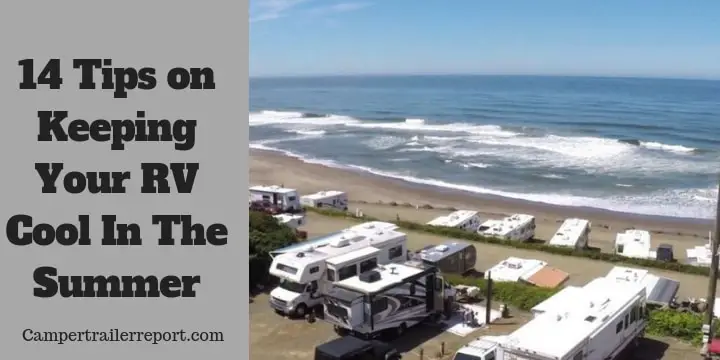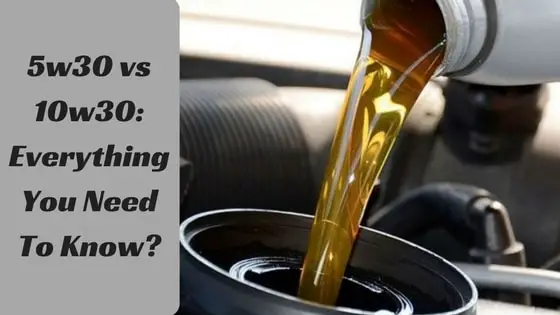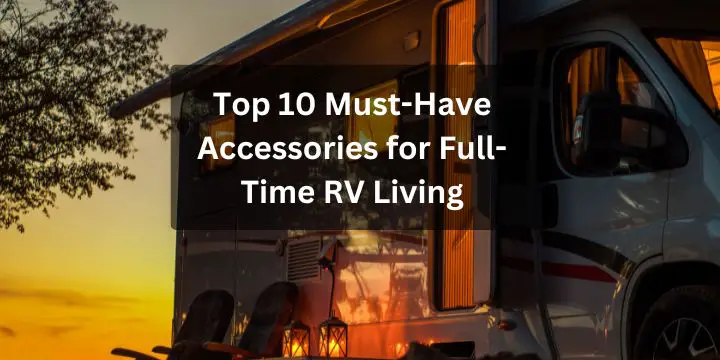
14 Tips on Keeping Your RV Cool In The Summer
Do you love boon-docking and dry camping? Then it’s important to priory keep your RV cool before the summer comes. Summer can sometimes become a challenge especially when you caught unprepared. How will you keep your coach cool during the summer time? Below are 14 Tips on Keeping Your RV Cool in the Summer.
1. Early AC starting
Even before the outside gets hot, turn on your RV or air conditioner to cool the floors, ceilings, and walls of the entire section. Make sure the RV is fully functioning to keep everything at peace!
2. Pull the shades
Pull the shades as the sun rotates around the RV to prevent sun rays from coming through your windows.
3. Awnings extension
Extend the awnings on the side of the sun if the outside is not too windy. Extending will shade the RV for some time. It’s advisable to do this while using your RV and also avoid leaving the extended awning unserved.
4. RV door window covering
Some tables don’t have shade on RV doors hence cover it to minimize direct heat on the doors from the sun. Even if it’s using a piece of cardboard, just do it onto the interior window frame part.
5. RV windows insulation
Use products like reflective foil insulation to insulate RV windows by just taping them onto your windows if the hot temperatures will exist for long period. For proper adhesion insurance, use reflective tape.
> You may also like:First Time Travel Trailer Owner Tips,Beginner’s Guide. <<
6. Fan insulation
Ensure you insulate your skylight and fan vent. Using RV vent insulator which has a reflecting surface is recommendable to prevent cool air from escaping through the vent. Besides, the sun is prevented from beating down into the below spaces.
7. Utilize the ceiling fan
Use your ceiling fan to enhance air circulation in the RV living space. Remember to adjust the direction of the fan to push cool air down since AC vents are installed in the ceiling.
8. Close off AC vents and rooms, not in use
Closing off your rooms helps conserve and also concentrate airflow in the target area. People who spend a lot of time in the living area and the kitchen should close AC output vents, bathroom and bedroom doors to help AC unit push cool air only in the targeted spaces.
9. Remember to shut down lamps and lights
Halogen and incandescent lights emit heat tons when working. Turn them off during the day and use LED lights as an alternative.
10. Leave all electronics off
When electronics like television are on for a long time they get warm. Putting them off lessens drawing of electricity hence allowing energy concentration to the air conditioners.
11. Don’t cook inside
Cooking inside generates heat: using appliances like oven should be avoided. Instead, use crock oven, grill or camp stove to make coffee, tea and other meals that don’t heat up.
12. Avoid frequent doors opening
Minimizing frequent doors opening allows cool air circulation in the room and keeping hot air outside.
13. Ensure AC vents are always clean
Unclean vents can make air conditioner malfunction. Always clean the intake vents and AC output at least once in a month to ensure nothing blocks the flow of air in them.
14. Annual AC unit servicing
Servicing the AC unit at least once every year minimizes unnecessary expenses down the road! Besides, it minimizes AC potential going on the fritz. Hire a knowledgeable and qualified RV tech to service all the AC components.
In the bottom line, when you follow the above tips will not only ensure keeping your RV cool in the summer but also the longevity of it.
> You may also like:45 RV Accessory Must-Haves for Your Travel Trailer<<
Related Questions:
How to keep RV cool without ac?
Using ac as a way of cooling an RV can turn out to be an expensive method for cooling. Luckily there are other ways you can use to cool your RV.
The most common way that everyone knows is parking your car under a shade.
Yes, this works, but in order to take the full advantage of the shade you have to pack your car in such a way that the side with fewer windows is exposed to the sun while the side with fewer windows is not exposed to the sun
The other way is to ensure that you do not do activities or use appliances that could inside your car that could lead to the production of heat.
Examples of these activities are like cooking inside the RV. You should cook outside.
Finally, ensure there is free flowing of air inside your RV. This can easily be done by opening all the doors and windows or having a fan.
The purpose of the fan is not to cool the car but to ensure a free flow of air. A refrigerator vent produces heat as it cools food.
This heat could be trapped inside the RV. Most RVs have vents. You should also make sure that the refrigerator vent is open at all times.
How to keep RV cool while driving?
As you are driving your car generates heat. The most common ways are from the tires and engines.
Heat from the tires is caused by the friction generated as you are driving. It’s safe to say that the heat will increase depending on how rough the road is and tire pressure.
The engine converts fuel into mechanical work. This process produces heat.
On the part of heat from tires, we could avoid heating the RV by ensuring we don’t have a flat tire and avoiding rough roads which will cause a lot of friction.
You should be warned that a tire with low pressure can even ignite. Also sometimes it’s always good to have rested after a specific time interval this will help reduce the heat and the RV to cool.
The other way to cool the car is by having a solar powered fan inside your car.
This is an efficient way of making use of solar power. If you want to cool your engine use a coolant fluid that is a mixture of water and antifreeze or ensures it gets a constant flow of air by using a fan.
Reflectix on RV roof
First, a reflectix can be defined as a reflective insulator. It’s made of silver to reflect heat away from the RV.
During a sunny day, most of the heat enters the RV through the roof. Placing a reflectix on the roof will help reflect away the sun rays.
In understanding how it works you have to know there are three forms of heat transfer. Radiation, convection, and conduction.
Convection is the transfer of heat through air and conduction is through solids Radiation to put it in layman’s language is heat from the sun. Generally, a reflectix stops heat transfer through all the means but its primary role of a reflectix is to prevent radiation heat by reflecting it back to air space.
Heat transfer by conduction is prevented by the insulator that is used to make the reflectix
On the effectiveness of a reflectix, it works well during the summer to cool your RV using the means discussed above.
But its main weakness is during the winter. Heat is lost during this period but it has no means of preventing heat loss. Simply put its ineffective during winter.


